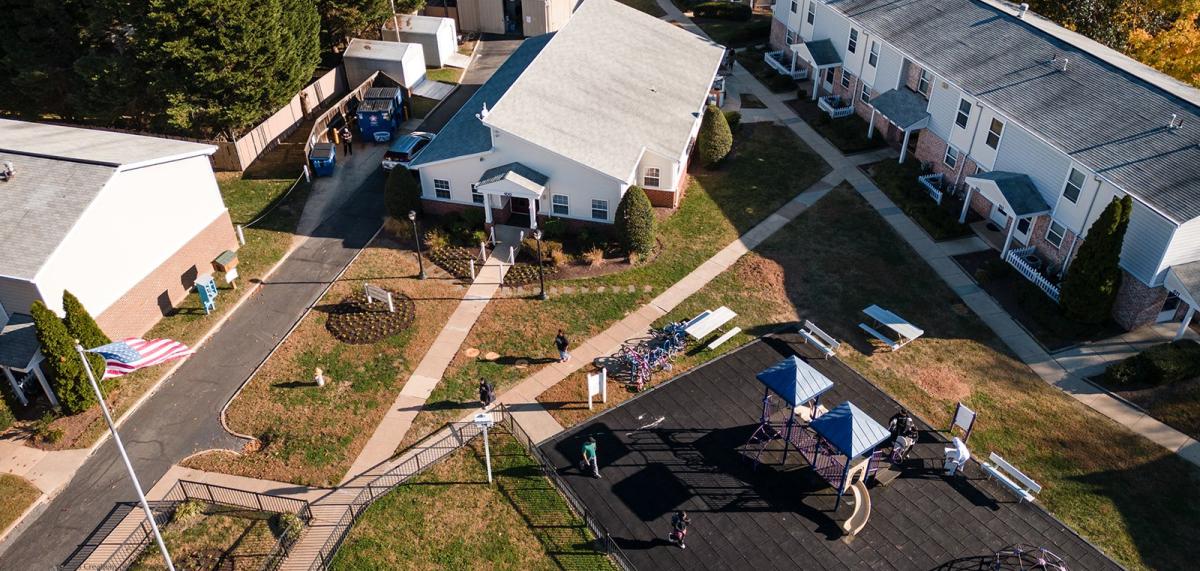
Hazel Hill Apartments- Fredericksburg, VA
NHT has a history of working with state and local agencies to strengthen their affordable housing policies, especially specific to the Low Income Housing Tax Credit (Housing Credit) program. The Housing Credit program is the largest federal source of financing for affordable housing, supporting the development and preservation of over 3.55 million units since 1987*. With our deep understanding of this critical resource, NHT’s efforts have helped to transform the program from one that favored new construction to one that preserves hundreds of thousands of units of affordable housing across the country. Learn more about the Housing Credit and NHT’s role here.
In early 2023, NHT embarked on the process of reviewing the Qualified Allocation Plans (QAPs)** from all 50 state Housing Finance Agencies (HFAs) and three local allocating agencies (Chicago, New York City, and Washington, D.C.) to identify the strategies used to promote housing stability in the Housing Credit program***. This latest analysis expands the scope to include, maintaining housing quality, preserving existing affordable housing, tenant protections and resident services.
NHT’s 2023 QAP analysis reveals that agencies are taking seriously the responsibility to provide stable and secure affordable housing by maintaining and preserving properties as affordable, combating climate change, and protecting tenants.
There are an array of approaches being utilized across the 53 allocating agencies, reflecting different political priorities, economic challenges, and technical capabilities. Examples from specific QAPs are highlighted in our Info briefs to illustrate the mechanics of each strategy and are presented as innovative policies or procedures for HFAs to consider as they explore options for improving affordable housing in their state.
- On average, allocating agencies require or incentivize 42 years of affordability – a full 12 years of affordability beyond the federal minimum
- Third Party Green Building Standards continue to be the most popular way for allocating agencies to comprehensively incentivize energy and water efficiency in Housing Credit properties, with 46 agencies referencing at least one building standard.
- 34 allocating agencies require or incentivize the installation of broadband infrastructure in both new and existing Housing Credit properties, with a further nine explicitly referencing minimum required internet speeds.
- Half of all allocating agencies incentivize the rehabilitation of dilapidated Housing Credit units
- 23 allocating agencies require or incentivize renewable energy, including solar, wind, and geothermal – an increase of 15 agencies since 2017
Infobriefs
NHT has developed topic-specific Infobriefs that explain how allocating agencies are integrating policies that create and preserve housing options that are stable, resilient, and foster agency. This series will be continually updated, so check back to learn more!
Preservation
HFAs are proactively promoting the preservation of existing Housing Credit properties and working to combat key threats that endanger the long-term affordability of existing homes through set-asides, incentive points, and other provisions.
Digital Equity
Digital equity is a key element to any thriving community and household and QAPs increasingly consider digital equity within the housing model as foundational infrastructure, in the same way as electricity and water.
Electrification
Electrification helps ensure the sustainability, health, and quality of affordable housing. As states increasingly strive to reduce emissions, some are ensuring that Housing Credit properties are also ready for the transition from fossil fuel energy sources to electric sources.
HOW CAN WE HELP?
To learn how we can help your allocating agency meet their goals, align with best practices, and promote stable housing, contact Laura Abernathy or Moha Thakur.